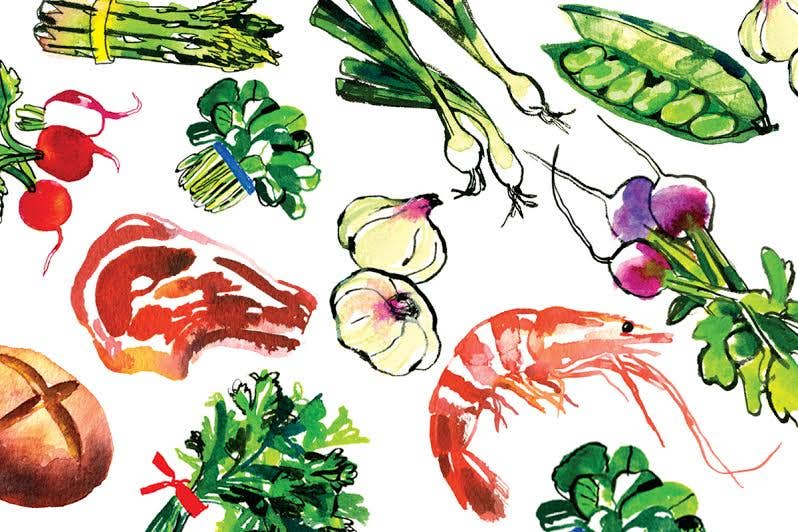
A Storied Boulevard
For a city that so famously straddles two continents—one shore lies in Europe, the other in Asia—it's not surprising that Istanbul's history is profoundly shaped by the cultural interaction between East and West. When Mustafa Kemal Ataturk founded the Turkish Republic, in 1923, formally marking the demise of the Ottoman Empire, he introduced a Western alphabet and a Western-style political system on the one hand and, on the other, empowered a distinctly Turkish sense of identity. As the city grew, many of the city's non-Turkish minorities began to leave Istanbul, making way for waves of migrants from the rest of the country. Those newcomers brought foodways that were new to Istanbullus, most notably a penchant for Eastern-style kebabs and Middle Eastern seasonings, which quickly became as beloved a part of the city's culinary landscape as the subtle braises, stews, salads, and pastries that were a legacy of Ottoman court cooking. No single part of this sprawling metropolis more vividly embodies Istanbul's multicultural past than Istiklal Caddesi, the frenetic pedestrian avenue that slices through the heart of Istanbul's Beyoðlu district.
Originally called Cadde-i-Kebir (Grand Avenue), in its 19th-century heyday the street was referred to by its European name, Grande Rue de Pera, and it served as Beyoðlu's own Champs-Élysees, lined with embassies and grand cafes. After a long period of decline, a recent wave of gentrification has sparked a commercial resurgence along the street, which is now home to electronics stores, clothing boutiques, and all manner of eateries, from global chain restaurants, Turkish fast-food outlets, and ýskembeci (tripe restaurants) to fancy coffee shops and glamorous rooftop bars—not to mention a few gastronomic relics of the street's European-inflected past. Near Istiklal's southern end sits Haci Bekir, a dollhouse of a confection shop that specializes in lokum (turkish delight). Nearby is the 1840s-era Markiz Patisserie, once a hangout for intellectuals and still furnished with gorgeous Art Nouveau murals. Farther up the street you'll find Rejans, a venerable restaurant founded by Russian emigres. And, adjacent to the magnificent Çiçek Pasaji (Flower Arcade), is the lively Balik Pazari, or fish market, where you can buy grilled bluefish, fried mussels, and, from stalls in the market, outstanding kokoreç (skewered lamb offal) sandwiches that probably taste just as good as the ones served here a hundred years ago.
Keep Reading
Continue to Next Story










